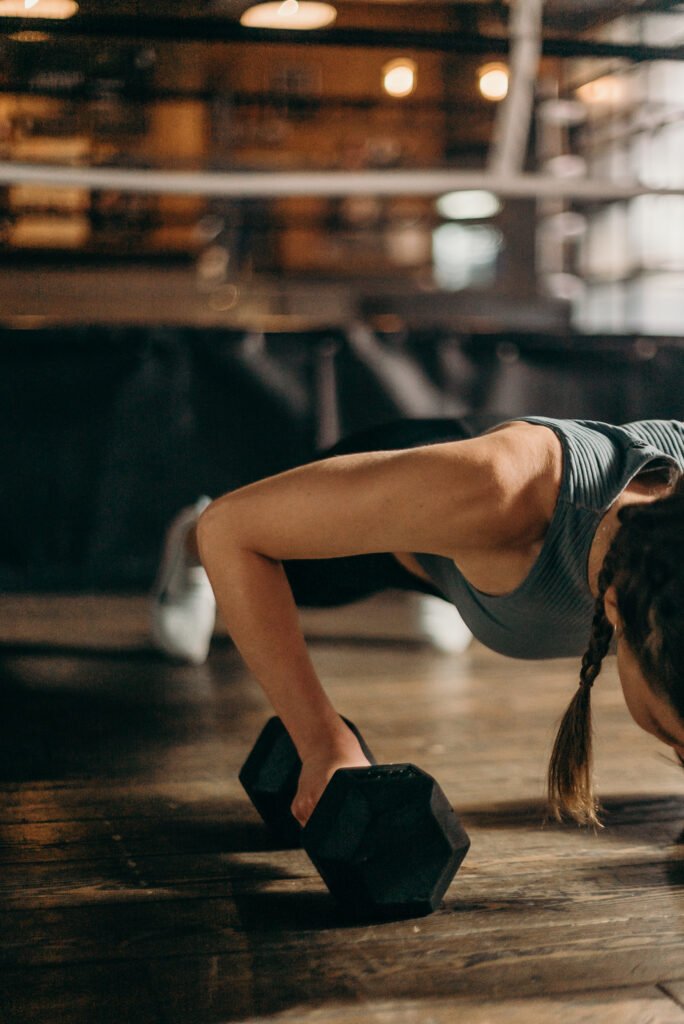When it comes to designing a gym layout, there are several key factors to consider in order to create an environment that is both functional and efficient. From the placement of equipment to the flow of foot traffic, every element plays a crucial role in ensuring that gym-goers have a smooth and enjoyable experience. In this article, we will explore the essential elements of a well-designed gym layout and provide helpful tips on how to optimize your space for maximum efficiency. So, roll up your sleeves and get ready to sweat – it’s time to create a gym layout that will keep your members coming back for more!

Choosing the Right Location
When it comes to setting up a gym, choosing the right location is crucial. You want a place that attracts your target demographic, so consider the needs and preferences of your potential clients. Are you targeting young professionals, families, or athletes? Understanding your target demographic will help you determine the most suitable area.
Researching the local competition is essential to ensure that your gym stands out in the market. Look for areas where there is a demand for fitness facilities but not an overwhelming amount of competition. This will give you an edge in attracting clients. Additionally, evaluate the accessibility of the location. Is it easily accessible by car, public transportation, or foot? Make sure your gym is conveniently located to encourage regular visits from your clients.
Determining Space Requirements
Before designing your gym layout, you need to determine the space requirements based on the equipment and activities you plan to offer. Take an inventory of the equipment you will need, such as treadmills, weight benches, or exercise bikes. Consider the number of machines and their sizes, as well as the equipment needed for group exercises like yoga or aerobics.
Once you have assessed the equipment, allocate space for different zones within your gym. This could include areas for cardio exercises, strength training, stretching, and group exercise. Creating separate zones allows clients to easily navigate the gym and find the equipment or activity they desire. Additionally, consider the traffic flow within the gym. Ensure that pathways are wide enough to accommodate multiple clients and that there is enough space between equipment to prevent overcrowding.
Designing the Reception Area
The reception area is the first impression clients will have of your gym, so it’s important to create a welcoming atmosphere. Use attractive decor and colors that reflect the energy and vibe of your gym. Display logos or signage that embodies your brand identity.
Providing comfortable seating is essential for clients who are waiting or taking a break. Consider using a mix of sofas, chairs, and benches to accommodate different preferences. Make sure the seating is comfortable and inviting, encouraging clients to relax and socialize.
In the reception area, it’s also crucial to display health and safety information. This could include guidelines for using equipment correctly, hygiene protocols, and emergency contact information. By providing this information upfront, you create a sense of trust and ensure that clients feel safe and well-informed.
Planning the Workout Area
The workout area is the heart and soul of any gym, and how it is organized can greatly impact the user experience. Arrange equipment logically, grouping similar machines or equipment together to create a seamless flow. This makes it easier for clients to navigate and locate the equipment they need.
Proper spacing between machines is essential for safety and comfort. Ensure that there is enough room for clients to move freely between the machines without feeling cramped. This also minimizes the risk of accidents or injuries caused by overcrowding.
Consider safety and ventilation when designing the workout area. Adequate ventilation is necessary to maintain good air quality and prevent overheating. Ensure proper ventilation systems are in place to keep the gym environment fresh and comfortable. Additionally, prioritize safety by placing emergency equipment, such as fire extinguishers or first aid kits, in easily accessible locations.

Creating Functional Zones
Creating functional zones within your gym helps clients easily identify the section that caters to their specific workout needs. Designate areas for strength training, where clients can find the appropriate weights, weight machines, and resistance equipment. These zones should provide enough space for clients to move around and perform exercises comfortably.
Allocate space for cardio exercises, which often include treadmills, stationary bikes, and elliptical machines. Make sure there are enough machines to accommodate peak times, and consider separating them by offering small alcoves within the cardio zone.
Including dedicated stretching zones is important to encourage clients to warm up and cool down properly. These areas should have mats or padded flooring, as well as any necessary equipment such as exercise balls or resistance bands. Designing distinct stretching zones helps create a focused space for clients to perform stretching exercises without distractions.
Optimizing Storage and Layout
An efficient gym layout requires proper storage solutions to keep equipment and supplies organized. Provide ample storage for equipment and make sure it is easily accessible. Consider using shelving units, lockers, or racks to store smaller items, while larger equipment can be stored in designated areas.
When organizing equipment, make sure it is arranged in a logical and user-friendly manner. Categorize and label equipment, so clients can easily find what they need. Consider using color-coded labels or signs for different types of equipment to assist with organization. By maximizing available space and keeping equipment organized, you create a more efficient and enjoyable gym experience.

Considering Lighting and Ambiance
Lighting plays a crucial role in creating a safe and pleasant environment within the gym. Ensure adequate lighting throughout the facility, especially in workout areas where visibility is crucial for safety. Bright lighting helps prevent accidents and encourages clients to stay energized and focused during their workouts.
Creating a motivating and energetic atmosphere is important for a successful gym. Consider using vibrant colors or motivating quotes on the walls to uplift and inspire clients. Music is also an important element to enhance the ambiance of the gym. Designate areas for speakers to ensure that the sound can be evenly distributed without disturbing other gym-goers.
Incorporating natural light and ventilation can have a positive impact on the overall atmosphere of the gym. If possible, include large windows or skylights to let in natural light. Natural light creates a more inviting space and can have a positive effect on the mood and motivation of clients. Adequate ventilation is also crucial to maintain good air quality and prevent stuffiness within the gym.
Designing the Group Exercise Area
If you plan on offering group exercise classes, creating a dedicated space for these activities is essential. Allocate enough space for different types of group exercises, such as dance, yoga, or HIIT. Consider the number of participants per class and ensure that there is enough room for them to move freely without feeling cramped.
Providing proper flooring is crucial to prevent injuries during high-intensity exercises or floor-based routines. Consider rubberized flooring or shock-absorbing materials to minimize impact on joints and reduce the risk of slips or falls. Additionally, invest in a sound system that can deliver clear and quality sound to ensure participants can hear instructions and music clearly.
When designing the group exercise area, it’s important to consider storage for equipment. Some classes may require specific equipment like weights, mats, or resistance bands. Incorporate storage solutions within the area to keep equipment organized and easily accessible for instructors and participants.
Integrating Amenities and Facilities
To enhance the overall gym experience, it’s important to integrate amenities and facilities within the space. Clean and accessible restrooms are a must-have for any gym. Ensure that there are enough facilities to accommodate peak times and that they are regularly cleaned and well-maintained.
Offering dedicated locker rooms and showers provides convenience for clients who may want to freshen up or store their belongings securely. Consider providing lockers, benches, and separate shower stalls to optimize the functionality of these areas.
Depending on the target demographic and the resources available, additional amenities like saunas, steam rooms, or a swimming pool can be considered. These facilities provide added value and attract clients looking for a complete fitness experience. However, it’s important to weigh the costs and maintenance requirements associated with such amenities before incorporating them into your gym layout.
Incorporating Safety Measures
Creating a safe environment within your gym is paramount to the well-being of your clients. Ensure that all equipment is properly maintained and regularly inspected for any signs of wear or malfunction. Establish a maintenance schedule and promptly address any issues that may arise.
Clear pathways and emergency exits are essential for safety during emergencies. Ensure that pathways are wide enough and that there are clear signs indicating emergency exits. Keep the pathways free from obstructions to avoid accidents.
Providing first aid and emergency equipment is crucial in the event of an injury or medical emergency. Have a fully stocked first aid kit readily available at a visible location. Additionally, consider having automated external defibrillators (AEDs) accessible in case of cardiac emergencies.
By following these guidelines and carefully considering each aspect of your gym layout, you can create a functional and efficient space that meets the needs and expectations of your clients. Remember, a well-designed gym layout not only attracts clients but also enhances their overall fitness experience.


